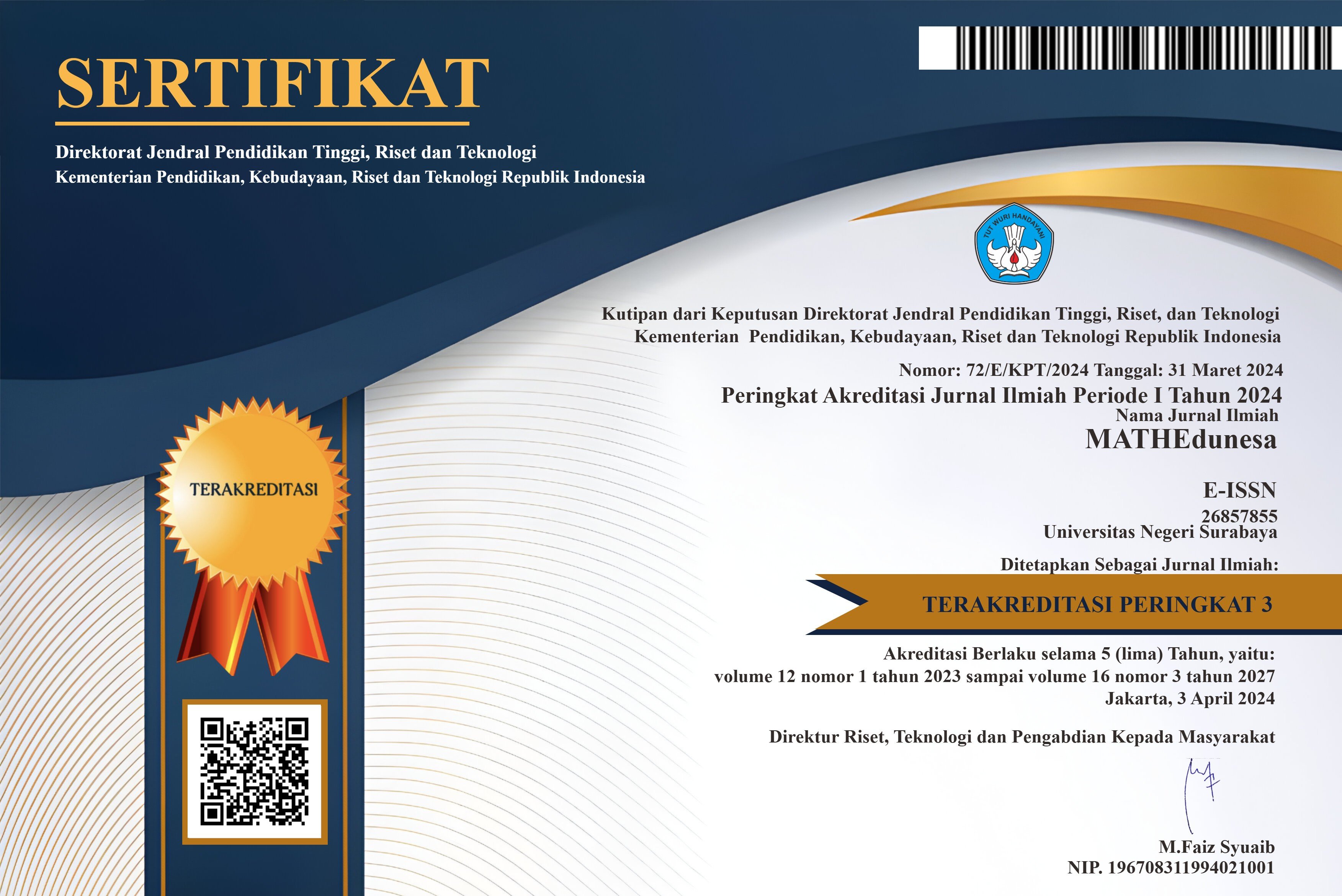ANALYSIS OF STUDENT'S MATHEMATICS REPRESENTATION IN SOLVING MATHEMATICS PROBLEMS BASED ON SPATIAL COGNITIVE STYLE
DOI:
https://doi.org/10.26740/mathedunesa.v10n2.pPDF_189-199Abstract
Mathematical representation is important to be trained in learning so that students can express ideas in obtaining a solution to a problem. This study aims to describe the mathematics representation of students in solving mathematics problems based on spatial cognitive style. This research is a descriptive research with a qualitative approach. The subjects of this study were three students of class XI MA Miftahul Qulub Pamekasan consisting of female gender students with equal mathematical abilities, namely all hig, and having different levels of spatial cognitive style, namely high, medium, and low. The instruments used in this study were spatial cognitive style tests, math problem solving tests, and interview guides. The results of this study indicate that (1) Students with a high spatial cognitive style understand the problem by presenting the information on the questions with visual representations in the form of tables and mathematical expressions of mathematical inequalities; planning problem solving using representations of words; carry out problem-solving plans using representations of mathematical expressions in calculations and visual representations in graphical form; checking again using representations of mathematical expressions, word representations, and visual representations. (2) Students with medium spatial cognitive style understand the problem by presenting the information on the questions with a visual representation in the form of tables and mathematical expressions of mathematical inequalities; planning problem solving using representations of words; carry out problem-solving plans using representations of mathematical expressions in calculations and visual representations in graphical form; checking again using representations of mathematical expressions and verbal representations but have not been able to provide conclusions. (3) Students with low spatial cognitive style understand the problem by presenting some of the information on the problem with a visual representation in the form of tables and mathematical expressions of mathematical inequalities; planning problem solving using representations of words; carry out problem-solving plans with representations of mathematical expressions; however, unable to checking again. Students with high and medium spatial cognitive styles can solve problem solving problems, but have different representational tendencies, while students with low spatial cognitive styles cannot solve problem solving problems. The results of this study can be a reference for teachers to pay attention to students' spatial cognitive styles in the learning process so that it is easier for students to understand the material.
Downloads
Downloads
Published
Issue
Section
 Abstract views: 393
,
Abstract views: 393
, PDF Downloads: 331
PDF Downloads: 331




